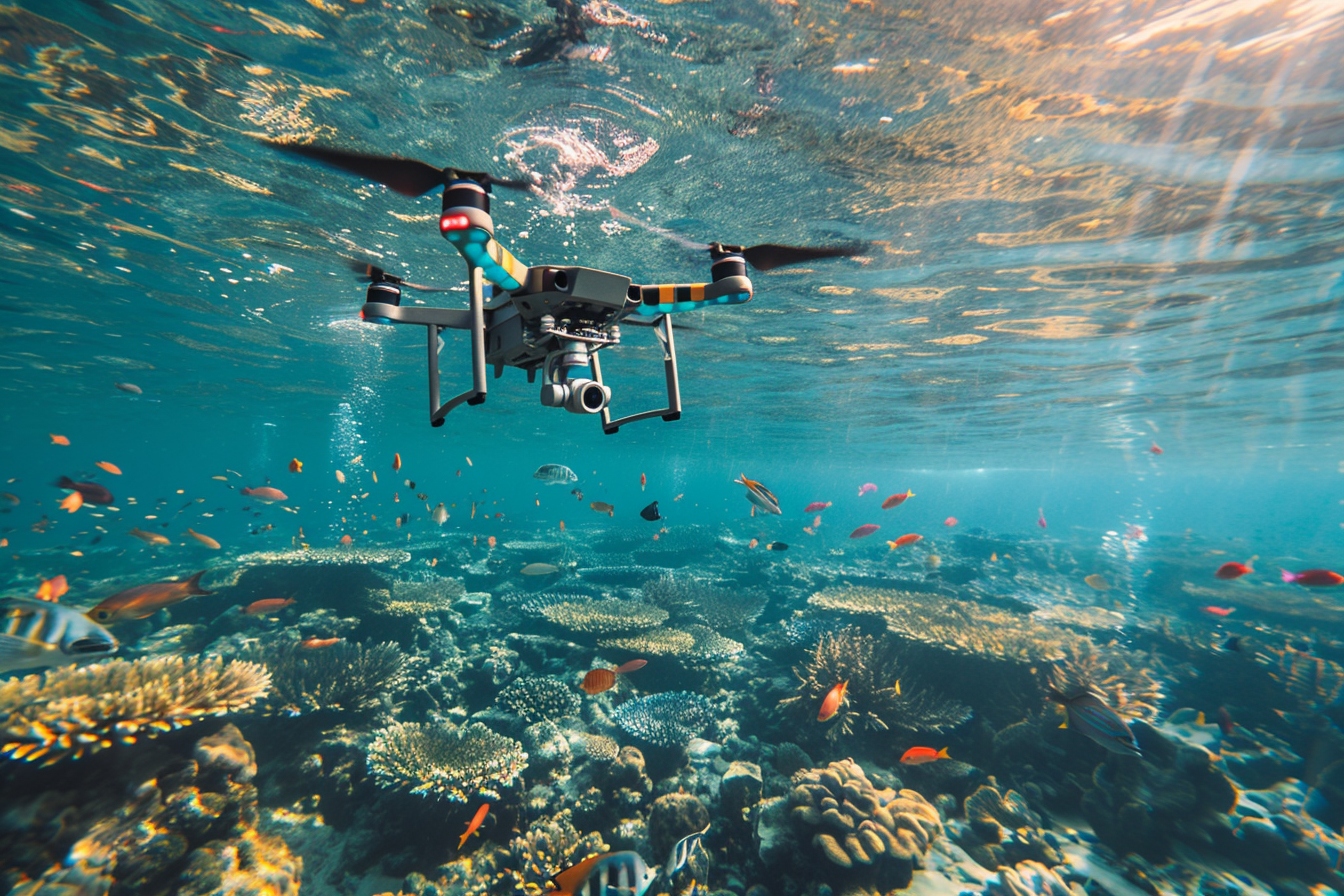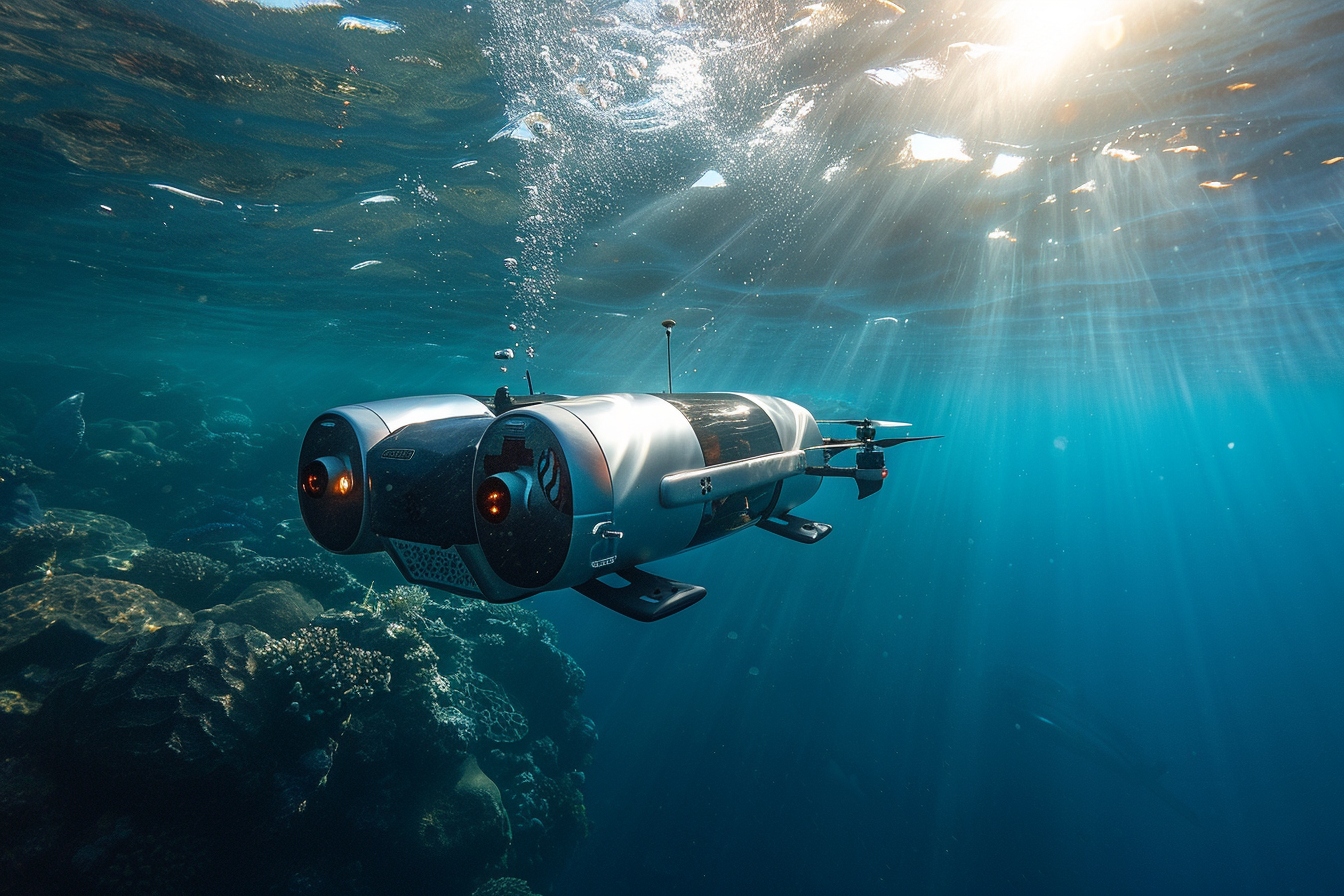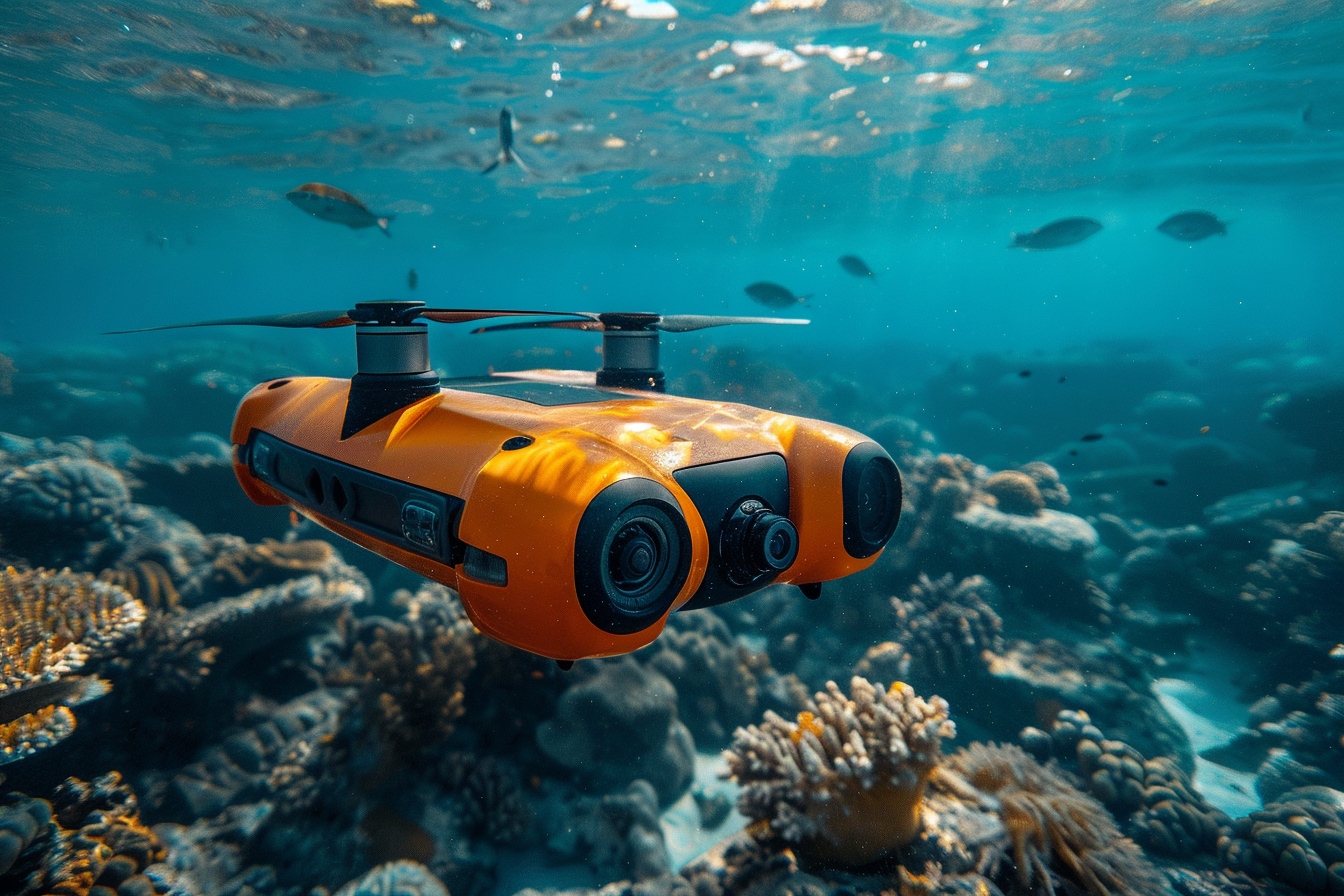The preservation of marine biodiversity represents a major challenge in the fight against the extinction of species. With the advent of innovative technologies, underwater drones, or ROVs (Remote Operated Vehicles), are becoming increasingly important in the monitoring and study of endangered marine species. This equipment offers unrivaled observation and information collection capabilities, without disturbing the natural habitat of aquatic organisms. Focus on the most effective underwater drones for monitoring endangered marine species.
Leaders in underwater drones
Several companies and organizations stand out in the design of underwater drones dedicated to marine research and conservation. Among them :
oceanone
Designed by Stanford University, OceanOne is a humanoid robot that has the ability to dive to great depths. Its dexterity and haptic sensors allow delicate interaction with underwater fauna and flora, making its use ideal for studying sensitive species.
trident
Produced by OpenROV, the Trident underwater drone is characterized by its portability and ease of piloting. Its maneuverability makes it particularly suitable for mapping habitats and locating populations of endangered species.
bluerov2
The BlueROV2, developed by Blue Robotics, is known for its ability to be customized according to the needs of each mission. Equipped with multiple sensors and cameras, it can collect precise data while navigating complex environments.
The contribution of drones to ecological studies
Population monitoring: Underwater drones are valuable tools for collecting data on the population, behavior and health of marine species. They can sneak into corners inaccessible to humans and carry out counts of individuals with remarkable precision.
Non-invasive sampling: Due to their delicacy, they can take tissue samples or organisms for genetic or biochemical analyzes without harming the living entity.
Habitat mapping: The detailed maps produced by underwater drones are crucial to understanding and protecting the critical habitats of threatened species.
Advantages of using drones for marine ecology
Minimal impact on wildlife: Unlike traditional research methods, the use of underwater drones minimizes environmental disruption and stress imposed on the species being studied.
Access to extreme depths: Some drones are capable of reaching abyssal areas where the fauna remains largely unknown, thus opening new horizons for the preservation of deep marine species.
Continuous monitoring: The ability to conduct long-term missions provides researchers with a window into the ongoing life cycle of marine species and seasonal changes in the environment.
The challenges to be met

However, the use of underwater drones is not without challenges. Issues of battery durability, resistance to the pressure of great depths and processing of the vast quantities of data collected must be constantly addressed in order to improve the effectiveness of these tools for scientific research and conservation.
Resistance to salt water and corrosion: Drones must be built with suitable materials to resist corrosive seawater, ensuring increased equipment longevity.
Underwater navigation and communication: Underwater communication and navigation systems are still being improved to allow more precise control of drones in an environment opaque to traditional radio or GPS waves.
The crucial importance of the data collected
The information these drones provide is used to develop effective conservation strategies. It is not only a question of following animals in their natural environment but also of understanding their interactions with the ecosystem. Such systems contribute to the implementation of protected areas, the identification of the main environmental stresses and public awareness of the challenges of preserving threatened marine species.
Innovation in marine study and protection

Underwater drone technology continues to evolve, continually bringing new possibilities for marine research and conservation. Their potential is being explored not only for species currently at risk, but also as a preventative means of understanding and protecting ecosystems before signs of decline are evident.
Training and access to technology
Although increasingly accessible, the piloting and maintenance of these devices require specialized training, highlighting the importance of educational programs and international partnerships to share these skills.
Perspectives and adaptation to future needs
Underwater drone designers are constantly listening to the needs of researchers and conservationists to adapt and improve the capabilities of these devices.
Integration of artificial intelligence: One of the most promising advancements is the incorporation of AI, which will enable drones to perform real-time analysis and make autonomous decisions to optimize tracking missions.
A global commitment to marine biodiversity
The protection of endangered marine species is an issue that requires collaboration between scientists, technologists and policy makers. Underwater drones are formidable allies in this endeavor, merging technical innovation with ecological imperatives. The growing awareness and deployment of these technologies represents a step towards a future where humans work in harmony with marine ecosystems to ensure their sustainability.












